Negative Plane
2022-03-30
by Niklas Göransson
And so it came to pass, the return of Negative Plane. Founder and lead guitarist Nameless Void presents The Pact… – a Faustian bargain in black metal form. Featuring an exclusive stream of the album opener: A Work to Stand a Thousand Years.

North American pre-sale courtesy of The Ajna Offensive– order here. Europeans, refer to Invictus Productions.
– After “Stained Glass Revelations” (2011), I wasn’t quite sure what to do. We tried to work on new stuff but didn’t get anywhere. I felt a bit burnt out on black metal, so I began playing with a band called OCCULTATION for a little while. But… I wanna say about 2015 or so, I started missing the really out-of-control South American stuff like SARCÓFAGO’s “I.N.R.I.” and “Bloody Vengeance” by VULCANO. I wanted to have something like that in the music again. I didn’t have a theme yet though, and we needed a theme.
As we will soon discover, for NEGATIVE PLANE the music and concept are deeply intertwined.
– Eventually, around 2016 sometime, I decided to make an album with different characters in the storyline. Not in a KING DIAMOND style, naming them ‘Missy’ or whatever, but more just mentioned by their trade. I thought, ‘Perhaps one of them is a blacksmith and maybe somebody works in the church, like a sexton, and another might be an architect – and each of them makes a Faustian bargain.’
A Faustian bargain refers to a pact in which an individual forfeits something of incorporeal value – such as his conscience, or soul – for material riches. The term can be traced back to German folklore, which has a legend about a scholar called Faust who sold his soul to Mephistopheles, an agent of the Devil, in exchange for worldly knowledge and prosperity.
– At that point, it was still a very loose framework; I had no idea how to put all this together. I didn’t have any finished songs yet, and I always write the music before the lyrics. So, I had this concept kicking around in the back of my mind but wasn’t really doing much with it. Then, in the spring of 2017, I visited a friend in Regensburg, Germany. She was in school and one of her friends from college did tours of the city, so they showed me around. One stop was at the Stone Bridge – the first of its kind in Europe after the Roman era.
The Stone Bridge of Regensburg – which is considered a masterwork of medieval construction – is believed to have been built in a mere eleven years, beginning 1135 and concluding 1146. Over the subsequent centuries, it served as a model for similar structures all over mainland Europe.
– They told me about a legend associated with it. A master architect was tasked to build the cathedral while his apprentice built the stone bridge: the two of them had a contest to see who could finish first. As the story goes, the apprentice enlisted the Devil in order to overtake his master. Their deal was that once the bridge stood ready, the first three souls to cross it would be given to the Devil; however, upon its completion, the apprentice drove a rooster, a hen, and a dog onto the bridge. The Devil – furious about having been tricked – supposedly sent a giant wall of water down the river, slamming it into the bridge.
To this day, the bridge has a big indentation which is said to have been caused by the Devil’s river-tsunami.
– When I heard that, I was like, ‘Wow, this is precisely the catalyst I need!’ Then I thought to myself, ‘I’d rather write about a church than a bridge; it would give me so much more to work with.’ But I had a lot going on around this time and there were some lapses in creativity due to… I don’t know, life. Whatever. It wasn’t until early 2019 that we finally finished the music for the album opener: “A Work to Stand a Thousand Years”. And since I knew it was going to be the first song, that’s when I could start working on the lyrics. We actually played it live in Ireland later the same year.
In October 2019, NEGATIVE PLANE performed at De Mysteriis Dom Invicti – a commemoration of the twentieth anniversary of Invictus Productions, held in a deconsecrated church. Also featured were HEAD OF THE DEMON, MALTHUSIAN, POSSESSION, and SACRILEGIA.
– And then, obviously, 2020 happened and New York became the coronavirus epicentre, so I ended up being off work but still getting paid. I suddenly had way more time on my hands than I’d ever planned for and was able to finalise the music to “The Other Door”, which had been the problem song for a while. Once I did that, the floodgates burst open. I thought, ‘Okay, I guess I have to write some lyrics now.’ And that’s when everything I’d been reading for the last few years – all the research, all my ideas – came together. I wrote the whole set of lyrics in a few months, which is miraculous by my standards because I never finish anything that quickly.
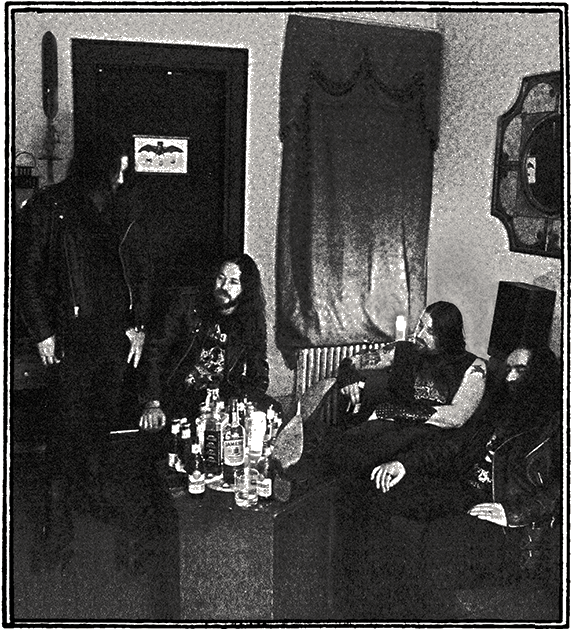
Last we spoke you mentioned having ‘three or four albums worth of decent riffs and sections’ – how much of this made it onto the new album?
– About ninety percent of “The Pact…” consists of material I had back then. There are still a lot of sections and riffs just floating around which I haven’t been able to assemble in the right way yet. And that’s the hardest thing for me, piecing everything together; “The Other Door” and “Poison and the Crucifix” were both huge pains. We were struggling on some parts up until a week or so before the recording – mainly due to my tunnel vision. I kept insisting that Bestial Devotion do this ridiculous drum beat which no drummer would ever want to play.
Bestial Devotion was originally on rhythm guitar but took up the drums after NEGATIVE PLANE had been unable to find a suitable percussionist. He attributes his strange playing style to still thinking like a guitarist – but evidently, not quite as much as Nameless Void.
– For some of the riffs I write, I’ll have in mind a beat that makes zero sense to an actual drummer. My keyboard has a drum set on it and I’ll program some absurd-sounding beat which fits to me but is almost insulting to anyone who can play the drums competently. I mean, Bestial Devotion is a phenomenal drummer; I’m so lucky to have him playing for us. He correctly told me, ‘This makes no sense’, but I was stubborn and said, ‘No, I’ve got this thing perfectly in my head!’ And he went, ‘No, no, this is dragging the song down – we have to do something else.’ We’ve had a few clashes and been forced to compromise a bit, but they were productive arguments.

“The Pact…” was sealed at New Jersey’s Moonlight Mile Recording between November 2020 and February 2021 and then mixed by producer Mike Moebius in May of that year.
– We learned from some of the mistakes on “Stained Glass Revelations”. Now, I love that album, but it was a huge struggle. We wanted it to be totally over the top; for example, I put reverb and a delay pedal on my guitar to make it sound utterly outrageous. It’s like when we play live: I put a tonne of reverb and other effects on my guitar to make it sound as big as possible. But when you’re doing that in a studio setting, you must use just as much reverb on the drums and then even more on the vocals and whatever else you might want to highlight.
Nameless Void initially took the same approach for “The Pact…” but was given pause for thought upon discovering a good micing technique while trying out his new EQ pedal.
– The engineer put a couple of mics close to the cabinet and then one further away to capture more of a room-sound – and that made a gigantic difference. I got this really sleazy guitar tone which shocked all of us; we were saying that it sounded almost like a lawnmower. I mean, you can hear notes and everything, but we were like, ‘Wow, this is such a trashy sound.’ We didn’t want to cover it up with too much reverb. ’Okay, this time, we’re not recording the guitars with 20,000 effects on them already. We’ll back off a bit and add it later.’
There is some reverb on the lead parts, whereas the rhythm guitar and drums have very few effects; the intention was to create more space for the vocals.
– The vocals are drenched in effects – especially the clean parts, which have almost DEAD CAN DANCE-levels of reverb. The engineer told us about a principle that was used on old soul and Motown records: all instruments were left completely dry, but the vocals had humongous amounts of reverb. And when somebody sings with all this stuff on it, everything else sounds as if it’s coated with the same effects. Essentially, it’s your mind filling in the blanks. That’s more of the approach we took for this recording, which gave us a bit more control. We wanted it to sound as horrendous and mean as possible. Actually, just the scratch mixes we got were amazing.
A scratch mix is a version of the song or album with some of the components unfinished. For instance, when recording drums, the band’s guitarist will often play along to help guide the drummer – this is called a scratch track.
– There were some screw-ups on the guitar and whatever that had to be fixed, but we said, ‘Hey, can’t you just leave it exactly like this? The sound we have now is perfect!’ And Mike went, ‘No, no, no – I’m gonna mix it and everything will be even better.’ And we were like, ‘Ah, I don’t know. We love it the way it is now.’ And that became a bit of a struggle because he made it sound differently, whereas we wanted it more in line with the scratch mixes. We had to work out a good compromise, but I’m extremely pleased with the end result. I’d say we are happier with the production on this than we’ve ever been before.
Are you still using your trusty old Peavey amp?
– Of course! Peavey Supreme 160. I wish I could get hold of another one of those; I’ve been trying to search but cannot find one anywhere. So, I’m very nervous for when this thing finally breaks down.
Someone I spoke to shortly before this conversation noted that Nameless Void uses a lot of ‘super-mental almost shred-like guitar techniques’ – but always in a fashion which serves the song in some capacity, as opposed to just flaunting his skills.
– I try to use certain techniques that I don’t hear other people doing all the time, just to make it sound a bit different. One element I always loved about POSSESSED’s “Seven Churches” is how they’d play something really low and then, suddenly, go really, really high – but there’s so much distortion and effects that it sounds as if another instrument joins up in there. I try to emulate that a little bit, but not in quite as frantic of a manner. I’ll also play something on the low note and then the sustain makes it sound as if there are two different things. You know, Eddie van Halen is famous for finger-tapping instead of playing the notes.
Tapping entails the guitarist using the fingertips from his picking hand to pull off and hammer on the strings in a manner similar to how the fret hand is employed.
– MORBID ANGEL was a big deal to me when I was learning to play, because Trey Azagthoth did finger-tapping so well. I remember watching him doing it in a way where he moved to the lower strings, and I thought, ‘What if you do that on the bottom string?’ Because I’d only ever heard anyone using it as a lead thing – never for rhythm. I started doing that on the very first NEGATIVE PLANE demos and I’ve kept it up ever since. All this is relatively normal for me, so I don’t think of myself as ‘shredding’. I actually try to make some of my solos sound very amateurish on purpose; I really want that South American “I.N.R.I.” feeling. I made the solo in “Three Turns to the West” as boneheaded as possible. Like, ‘Alright, if DD Crazy (SARCÓFAGO) was a guitar player, this is what he’d come up with!’
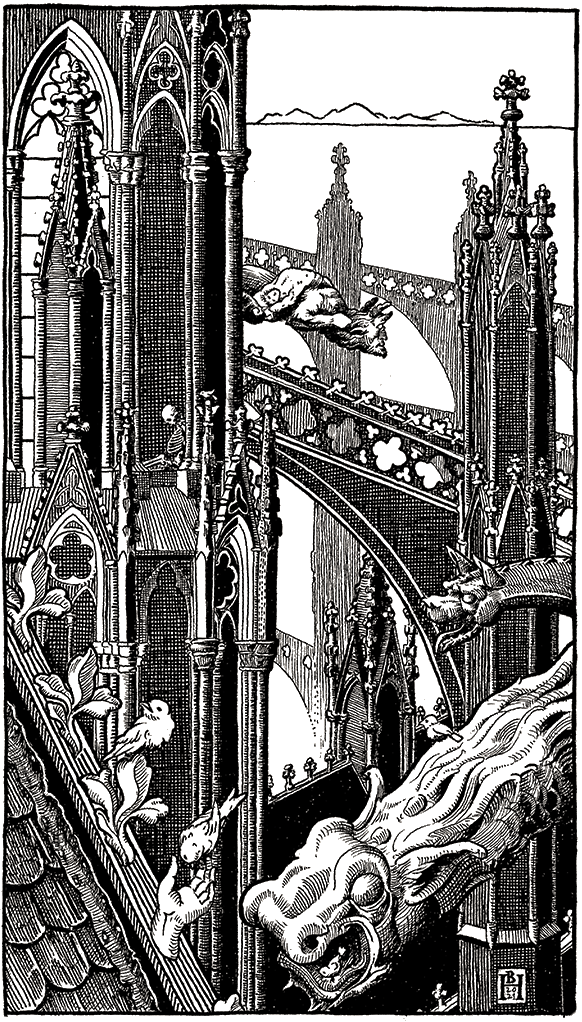
The lyrics to “Lamentations and Ashes” were inspired by you seeing rats running around in the New York City subways – did you draw upon any real-life experiences this time around?
– Well, one example comes to mind but I’m not sure how significant it is? In 2015, when NEGATIVE PLANE toured Europe with MALTHUSIAN, we stopped in Freiburg, Germany. And of course, we had to do the touristy thing and go check out the church. Our German driver overheard some old man who saw us walking in – you know, looking like typical metalheads, wearing all-black and everything – saying, ‘Oh, look. Even the Devil goes into the church.’ I immediately went, ‘I’m writing this down!’ So yeah, that’s where the title “Even the Devil Goes into the Church” came from.
After spending some time poring over the album’s written content, I was quite frankly flabbergasted by the efforts invested into its concept. I’ve studied a lot of lyrics over the years, but very few bands have come even remotely close to this level of literary ambition. Even more noteworthy is that Nameless Void apparently has no previous experience in writing fiction of any kind.
– No, but I have taken some basic university-level English classes, where I guess the importance of using metaphors and similes and other basic language things were hammered into me. However, I’d say I’m more inspired by people who are great lyricists; I’ll see them and think, ‘I wish I could do what they do.’ But it’s more me reaching for things that I really admire than trying to pass myself off as an author, and I feel as if I still have a long way to go.
Did you have the whole story mapped out when you started?
– I had a rough outline of where to take things, but at the same time I wrote each lyric in chronological order. And keep in mind that I also had to fit the phrases with the music. Once we’d demoed the songs, I’d listen and try to piece the words together and see if I could get ’em to rhyme. After compiling a few ideas, I went to our rehearsal space to try them out. Then I’d discover, ‘Oh, the timing here doesn’t make sense. I need to change this word around.’ I had a general idea, but there were definitely parts where I myself didn’t know what was gonna happen until I started writing.
What was the basic premise?
– I knew I wanted it to begin with something being built, and then I wanted it to end with things being torn down and burned. The in-between parts though… I was still figuring them out. I had all these ideas I wanted to include, like the Regensburg legend in which they trick the Devil by sending animals across the bridge. I used that for the scene in “Poison and the Crucifix” where the archbishop leads his dog into the church. I was like, ‘Hmm, did clergy even have pets? ‘ I actually had to look that up. ‘Yep, I guess they did.’ Whatever, it’s not a documentary anyway.
In the album’s second chapter, “Poison and the Crucifix”, the archbishop is called upon to bless the seal of a new church. Painfully aware of a prophecy stating that the first soul to enter the completed church will be damned unless pure in its Christian faith, the clergyman attempts to circumvent this predicament by sending in his hound.
– I had also envisioned some kind of agent of chaos on earth who would eventually reveal himself. Of course, I didn’t know exactly when that would happen, but a lot of it was just… I don’t know, my ideas sort of took on a life of their own when I tried to fit the words into fixed song structures. In that sense, it was helpful to use the music as a framework. I’d say, ‘Okay, here is where that verse goes.’ I might also have kept some of this in mind when I composed the material. One thing I usually do is if I know that it’s a chorus: it needs to be dramatic. Or if it’s a bridge, it should have a bit of bombast or so.
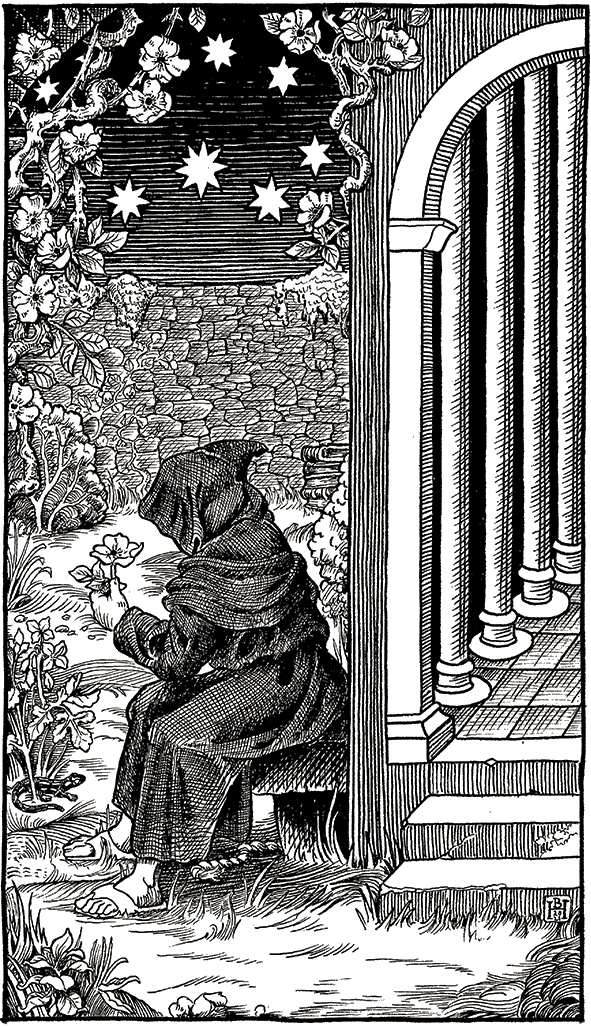
In many cases, the music sounds as if it was written to mirror developments in the storyline. One such example is the aforementioned verse from “Poison and the Crucifix”, where tension-inducing cymbals appear as the archbishop’s beast is ushered into the church. Also, in “Three Turns to the West” there is an accusatory pounding on the toms as a rogue monk is confronted by his brothers.
– After that part of “Three Turns to the West” where the monk is discovered, I wanted there to be a long break before you find out what happens to him. It didn’t feel necessary to convey every little development in the interim. I mean, you can kind of guess… it’s that time-period, a person has been caught performing what looks like a demonic rite – so what’s going to happen? Obviously, the Inquisition will burn him at the stake. There won’t be a fair trial, he’s not gonna be able to explain himself. So, I thought that part would make for a good instrumental area. But yeah, I do think of these things when I’m working on new material. The music guides where the words go and what’s happening with the narrative.
The lyrics – each of which have custom-made artwork and a brief synopsis – are presented in a stylish booklet that looks more like a collection of short stories than a record insert.
– Well, we have Annick Giroux from CAUCHEMAR and Temple of Mystery Records to thank for that. Bestial Devotion and I have been friends with Annick for a long time. I wouldn’t trust anybody else to do things for us; for example, if we’re playing a show, she makes the flyers and not once have we had to tell her what to do. She just does it, and everything looks amazing. I told her many years ago, ‘Whenever we do this third album, we want you to be involved.’ So, she’s responsible for both the layout and the cover.
Speaking of which, what’s the relevance of that cover photo?
– Going back to this whole concept, we thought, ‘Okay, is this story just about a church? No, it’s not. It’s about a bunch of different people who make Faustian bargains or commit mortal sins.’ So, we were discussing designs that would fit both with such an atmosphere and the general region where the storyline takes place. And during the course of this we happened upon some pictures of Auerbachs Keller, which we had all visited a couple of times. That’s the place where Mephistopheles first appears in Goethe’s Faust.
Auerbachs Keller is a wine bar in Leipzig which dates back all the way to 1438. While attending the city’s university in the 1760s, German author and scholar Johann Wolfgang von Goethe would often frequent the establishment. He spotted two paintings – both of which were 135 years old at the time – depicting the legendary astrologer, alchemist, and magician Johann Georg Faust. Historians have established that the man the myth is based on actually lived during the 16th century German Renaissance; however, since he has posthumously become subject to widespread folklore, it’s difficult to separate fact from fiction. Goethe was already aware of the legend from his youth, but these paintings made such an impression on him that he used Auerbachs Keller as a location in his widely celebrated literary work Faust.
– Bestial Devotion found an old photo from 1919, I think, which was perfect. Then we did a lot of playing around with the colour theme. You know, the biggest black metal cliché is winter. And the next cliché down is this scorching heat, hellfire, and everything. And then you have the fall. Now, I love all these clichés, so I’m not saying anything bad. “Stained Glass Revelations” was autumn or early winter. And I’d say “Et in Saecula Saeculorum” had more of a hot-type thing going. This one, I wanted it to be more of a late spring, early summer-type feel. That oppressive warmth where it’s not hot-hot but rather a muggy, uncomfortable feeling as if something is coming. We wanted a different approach than the usual thing everyone’s doing, which we have also done.
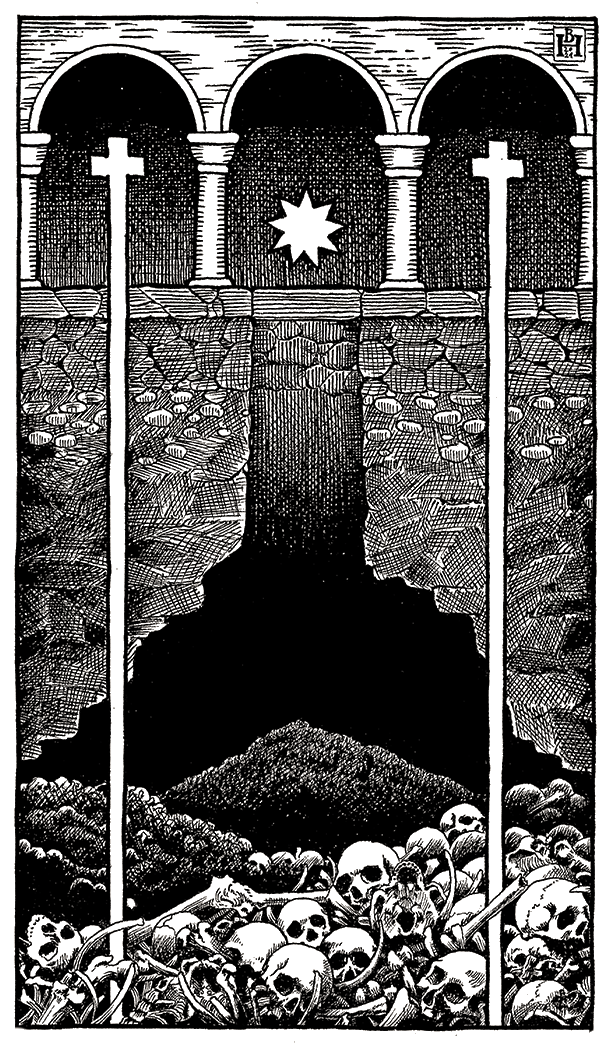
The booklet is marvellously decorated by Ben Harff – a German artist who has apparently taken the liberty of illustrating his own version of Tolkien’s Silmarillion. I first noticed him through the work he did for “The Course of Empire” by ATLANTEAN KODEX, but that was his only metal project at the time.
– We asked Annick if she could recommend someone. She mentioned Ben Harff to Bestial Devotion who then showed it to me, and we saw all this illuminated manuscript stuff Ben made for Tolkien works and things like that. I was like, ‘Wow!’ That’s how we started. I had a phone conversation and exchanged some emails with him. Then I thought, ‘Okay, I need to provide some background information to guide him with the illustrations.’
To help fully convey all the intricacies of his lyrics, Nameless Void penned a 2,500-word explanation – clarifying the lyrics in great detail and listing all the relevant references between songs.
– I already had all of it either in my head or in jumbled notes along with the lyrics. I organised everything and put it in a document which I sent to Ben. Once he’d read it, we discovered another synchronicity where the universe was telling us that our collaboration was meant to be. He’s like, ‘This is an amazing concept. That legend about the Regensburg bridge is exactly like the church here in Cologne.’
The original 13th-century master mason of Cologne Cathedral, Gerhard of Ryle, is said to have been solicited by the Devil with promises of making sure a cathedral of unparalleled splendour was built. The only catch was the Devil’s price; he demanded not only the architect’s soul but also that of his wife and son. However, the Devil promised that should the cathedral not stand completed by the time the rooster crowed on the day of the third year, he would forgo his compensation. Gerhard took the gamble, thinking the feat impossible, but was increasingly dismayed at the sight of rapidly rising church towers as the workers toiled night and day. Seeking to escape the debt, his wife devised a cunning plan. On the morning of the third year, hours before the sun rose, she began mimicking the rooster’s song, drawing premature responses from poultry all over town just before the final bricks had been laid. The Devil conceded defeat, but his anger was terrible. He demolished parts of the finished structure and then uttered a curse: that all future attempts to finish the construction would fail. Interestingly, one proven historical fact is that Gerhard of Ryle died from a falling accident at the construction site. It wasn’t until 1880, 632 years since the first stone had been laid, that the cathedral was finished.
– I’m ashamed to say that I didn’t even know about it until he told me. And I was like, ‘Ah, this is perfect.’ Ben was very, very on-board with the whole concept from the beginning. And he took it much further than I ever would’ve thought; I mean, we’re talking elaborate research here. Just the symbolism he put in those images… he asked me, ‘Can you figure out what these details are? I’m like, ‘Well, I wrote the lyrics and even I don’t know what that is!’ So, Ben prepared for me a document of his own. Let’s just say I’m in awe of how great of a job he did and how far he took everything.
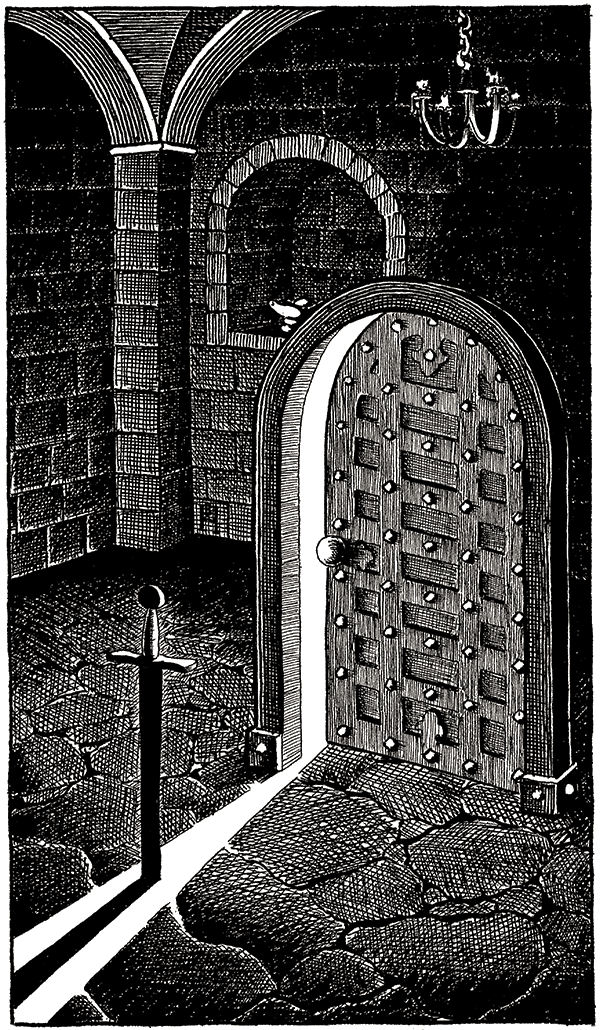
I’ve been able to read both the explanation Nameless Void provided Harff with and the other way around; this took my appreciation for both the lyrics and artwork to another level. As it turns out, the plot has far more depth than one might initially assume and features protagonists with sophisticated motives and backstories that help explain their actions. There is plenty not only left up to the imagination, but which also has multiple possible outcomes with diverging storylines. The artwork – described in painstaking detail in a 3,400-word essay titled ‘The symbolism and deliberate details in the illustrations’ – is imbued with such complexity that it boggles the mind. To my understanding, neither of them are going to be made publicly available.
– I’m honestly not sure how much interest the whole story will generate. Also, I felt as if giving away too much information right there and then would be detrimental. I wanted to leave out as much as I could unless it was directly mentioned in the lyrics. I guess if someone asks, I’d be happy to answer. We did have a conversation with Invictus and Ajna about including some of Ben‘s explanations. And maybe I could add mine as well, but I guess we’ll have to wait and see if anyone even cares. A lot of people read the lyrics, but many just push play and listen. Which is perfectly fine too, of course – we put a lot of work into the music.
Do you, by any chance, have an obsessive personality?
– Oh yes, definitely. Sometimes it helps though! With the lyric part – definitely, because I worked on them obsessively and wrote all the concepts and everything. I put myself into that world and then just couldn’t stop writing. I actually had to force myself to stop before I went even deeper.
The value of genuine and sincere religious faith is a recurring theme – one could almost argue that it’s the proverbial moral of the story. In light of this, it’s interesting to note that Nameless Void was raised in a strict religious household.
– Hmm, it was one of those things that felt right to put it in there, but I’m not sure where it comes from. Sure, I was raised Roman Catholic – and that wasn’t just going to church once a year or so, it was every single Sunday. My parents are pretty devout and raised me to believe that the Christian religion is one hundred percent the way the world is. But then I started noticing details that didn’t quite line up with this. Having certain fundamental matters which I’d always believed to be true turn out not to be true was quite jarring for someone so young. I’m sure there are hidden sentiments in the album, but it definitely wasn’t something where I consciously said, ‘This is about me.’ It just showed up in there.
What’s next for NEGATIVE PLANE?
– Well, “The Pact…” is scheduled to come out April 30 – for obvious reasons – and then two weeks later we have a show here in New York. We’re playing the entire album from start to finish and that’s it. We’re also working on new material. I’m hoping it goes faster than the last couple of things have gone; my thoughts are that we maybe just do an EP with two or three songs – you know, take a little breather from doing full-lengths. I don’t know exactly what we’ll do, but that’s what the immediate future holds.




